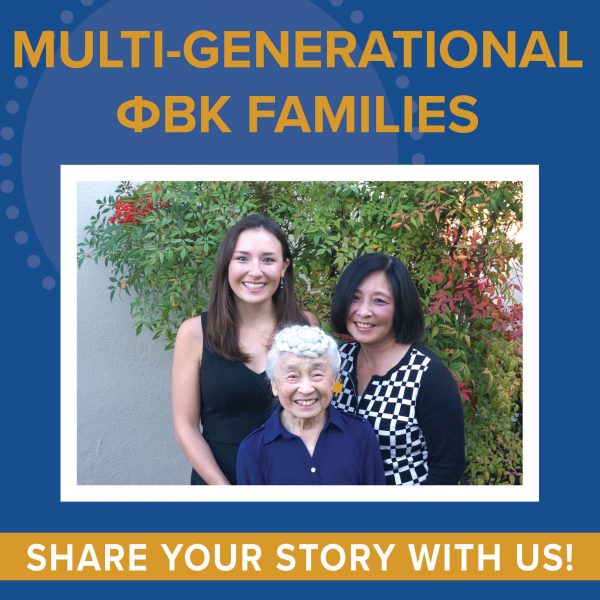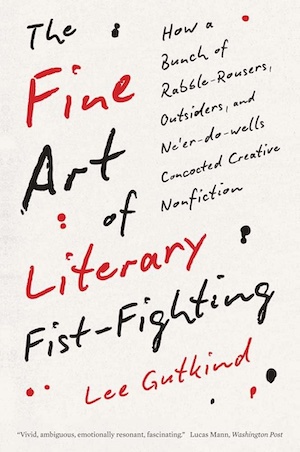By David Madden
In his first teaching job, in 1959 at Appalachian State Teacher’s College in Boone, North Carolina, “David Madden invented the term Creative Nonfiction,” acknowledges Lee Gutkind, “the Godfather behind Creative Nonfiction.” In Vanity Fair, James Wolcott called Gutkind a “human octopus.” From about 1970 until 2024, Gutkind pursued his epic adventures as what Harper’s called “the leading figure behind the Creative Nonfiction movement.” Gutkind himself delighted in calling the prolonged battle to realize his galloping desires and sky-high aspirations “literary fist-fighting.”
The title and subtitle of Lee Gutkind’s memoir conveys the conversational and combative tone and style of his tale of the creation and career of the new form “Creative Nonfiction,” set within his stormy experiences in the groves of academe, masterfully meshing his autobiography with the wild, zany, “amazing story of the genre’s chaotic evolution.”
Gutkind describes the effect of past and current masters upon young writers, dwelling most fully upon Montaigne, Daniel De Foe, Tom Wolfe, Hunter S. Thompson, Annie Dillard, Diane Ackerman, Gay Talese, Joan Didion, John McPhee, George Plimpton, Truman Capote, Joyce Carol Oates, and Norman Mailer, among others. His very thorough analytical index is rich with familiar literary names.
Literary quarterlies and such magazines as Playboy, Harper’s, New Yorker, Ramparts, Rolling Stone, Village Voice, and Esquire fostered the development of New Journalism and of other new ways of writing nonfiction. Some innovative novels also inspired the evolution of Creative Nonfiction.
In defining Creative Nonfiction, Gutkind stressed the features of fact-based narratives on every imaginable subject, not so much upon the aesthetics of imaginative conceptions, structure, style, and techniques.
Gutkind has written 16 books on a wide range of genres and subjects, with major publishers, including Norton, Dial, Holt, and with university presses, beginning in 1973 with Bike Fever: An Examination Of Motorcycle Subculture, followed by books on healing medicines, travels with his son, robots, memoirs, baseball, veterinarians, childhood mental illness, inside a children’s hospital, organ transplantation, rural America, baseball from the umpires’ perspective, and three on Creative Nonfiction itself, along with one novel, God’s Helicopter.
He has edited 32 books, an amazing variety of works on the creative process, true crimes, three on baseball, science, three on the health care system, becoming a nurse, becoming a doctor, health and science, end of life, writers’ stories about depression, living with mental illness, Southern women, becoming a teacher, nature, Pittsburgh, three collections of the Best of Creative Nonfiction, and on the first 30 years of the journal.
In the early 1990s, Gutkind explored the idea of creating a journal devoted to Creative Nonfiction. He launched Creative Nonfiction in early 1994 and published 78 more issues over three decades. Among the astonishingly varied topics were: emerging women writers, diversity dialogues, poets who write prose, surviving crisis, memoir as a genre, fathers and fatherhood, exploring and expanding genre, experiments in voice, shifting perspectives, sex, intoxication, science and religion, how we teach, learning from nature, telling stories that matter, Mexican voices, the line between fact and fiction, the brain, style and substance, and Creative Nonfiction in the Crosshairs.
Witnesses to his “freewheeling . . . crazed” resolve, his “schemes,” some people were motivated to call him crass, a promotor and a self-promotor, aggressive, over-wrought, as he worked long and hard at persuading writers’ magazines, organizations, and conferences to accept, and, finally, embrace this unsettling new concept, especially Associated Writing Programs, Poets and Writers, and the National Endowment for the Arts’ Literature Fellowships panel. By 1997 Creative Nonfiction, the “open genre,” was being accepted to an encouraging degree.
At 20, Gutkind served in the Coast Guard, later became a traveling shoe salesman, a beer truck driver, and an advertising and public relations writer.
His higher education began in the mid-1960s as a long-haired hippie motorcyclist, in full uniform, “trying to figure out what the writing life was all about and somehow become a part of it,” first as a student in general studies (a term that fits his life) in the English Department of the University of Pittsburgh, in awe of the Cathedral of Learning. In the early 1970s, dreaming of living the literary life, he barged, stumbled into the academy, an opportunist instructor, an “outsider-motorcyclist-interloper,” he began teaching at a community college. Later, teaching expository writing at Pittsburgh, he was the only person teaching without an advance degree. Often praising his finest students, Gutkind taught creative writing for 50 years.
Conflict “excited and invigorated” him as he proselytized and pushed the concept of Creative Nonfiction, obsessively, instinctively, naively, provocatively defended it and simultaneously pushed it forward, a struggle that was like the stormy progress of popular culture, women’s and black studies in academe.
By around 2000, he claimed, “There was no one left to fight with.” Creative Nonfiction is now well-established in creative writing programs and in mainstream publishing.
Gutkind is an excellent storyteller. He begins with a vision and a venture, which become a saga, an epic, well-paced with vivid delineations of a multitude of personalities, episodes. He adroitly delineates the dynamics of individual and group interactions in departmental and literary conference politics.
Professor Emeritus in the Department of English and Professor Emeritus of the School for the Future of Innovation in Society, Arizona State University, he feels exquisitely sad when he passes the Cathedral of Learning on the Pittsburgh campus.
Lee Gutkind evolved with the evolution of Creative Nonfiction. At 80, he is an unfinished adventurer, still evolving.
David Madden (ΦBK, University of Tennessee) is the author of more than 50 books of fiction and nonfiction. His memoir, My Creative Year in the Army, is to appear in the fall.




